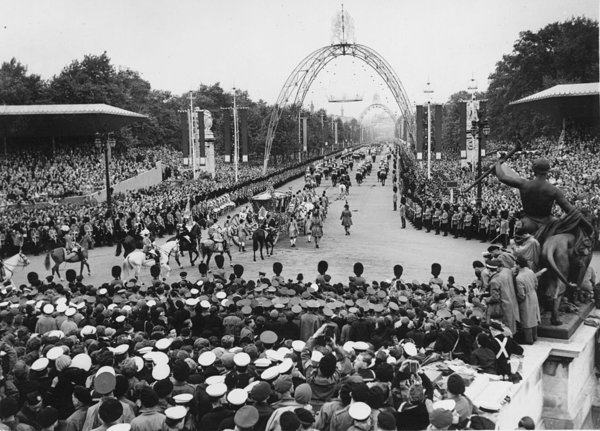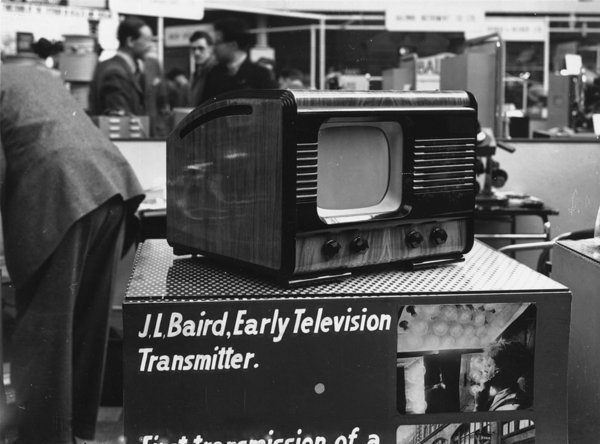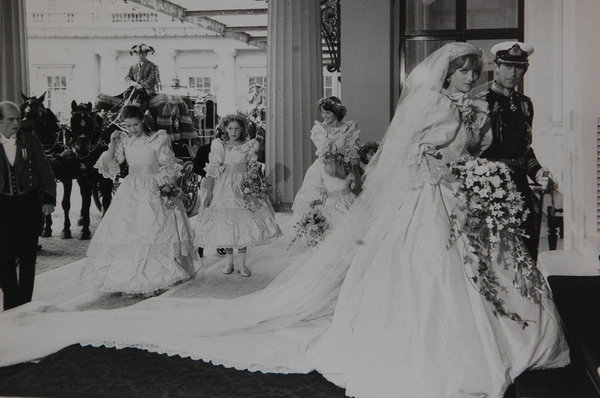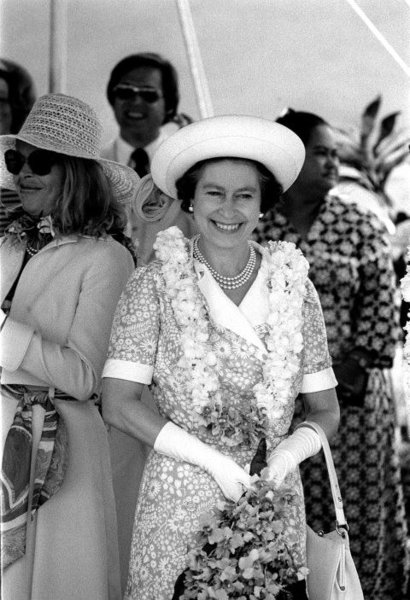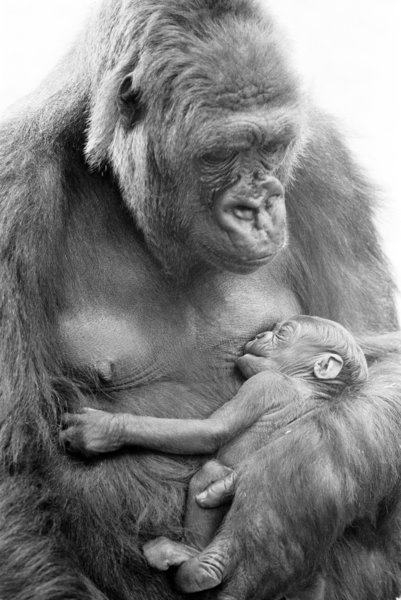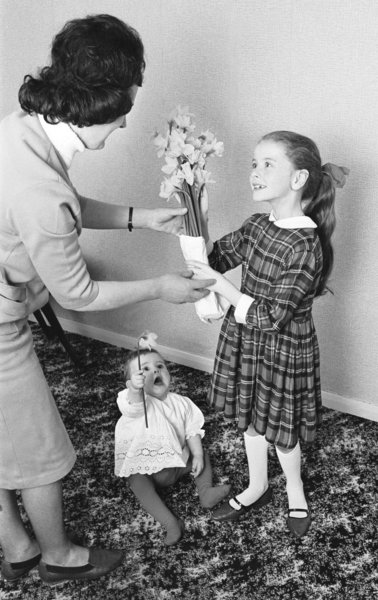Events
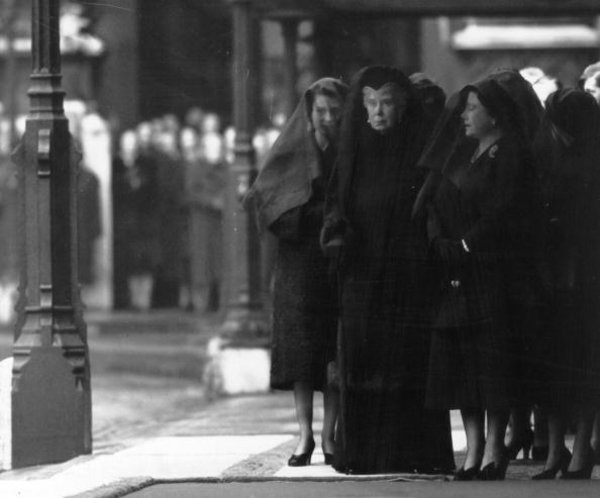

Queen Elizabeth The Queen Mother (1900 - 2002) (right) in mourning with Queen Elizabeth II and Queen Mary (centre) at the funeral of King George VI. King George VI died on the night of February 6, 1952. The funeral took place on a dreary winter day — an even grimmer occasion than the average royal funeral. Photographer Ron Case (a collegue of Ron Burton's at Keystone Press Agency and a life-long friend), who was with a group of other press photographers outside St George’s Chapel, Windsor, had only RAF aerial reconnaissance camera. With that old wartime equipment he took the photo of Princess Elizabeth (the new Queen); Queen Mary and Queen Elizabeth (the Queen Mother) (l. to r.) making their way slowly into the chapel where the king’s body lay in state.
The picture, which came to be known as the ‘Three Queens in mourning’, is a truly haunting image. All three grieving queens, representing three changing generations, were clearly seen through their veils. Although other photos of three queens altogether exist, they were nearly all official portraits, and Case’s informal photo revealed the rarely seen aspect of the modern royalty: trained from birth to repress their emotions, they were still capable of humane emotions. The next day, a close up version of this photo also made the front pages of every single national paper, and subsequently become one of the most widely distributed British photographs of the 20th century.
Photo by Ron Case 15 February 1952
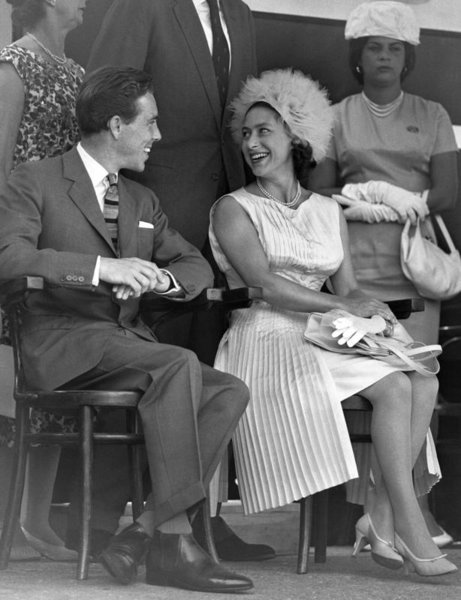

Princess Margaret and Lord Snowdon seen here during the ceremony to mark the independence of the Island of Jamaica. 6 August 1962
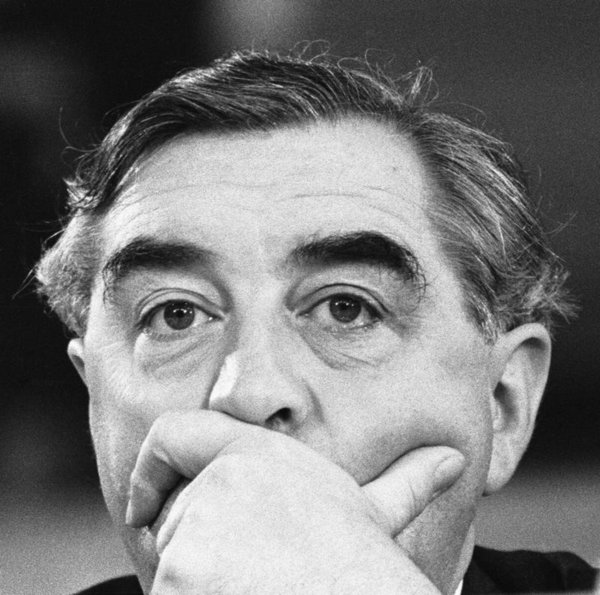

Predicament: George Brown listens to Labour leader Hugh Gaitskell addressing the Labour Party conference with strongly-stated opposition to British membership of the Common Market: "We must be clear about this; it does mean, if this is the idea, the end of Britain as an independent European state. I make no apology for repeating it. It means the end of a thousand years of history. You may say: Let it end. But, my goodness, it is a decision that needs a little care and thought." 3 October 1962


Funeral of Violet Kray, mother of Reggie & Ronnie Kray, Chingford, North East London. 11 August 1982.
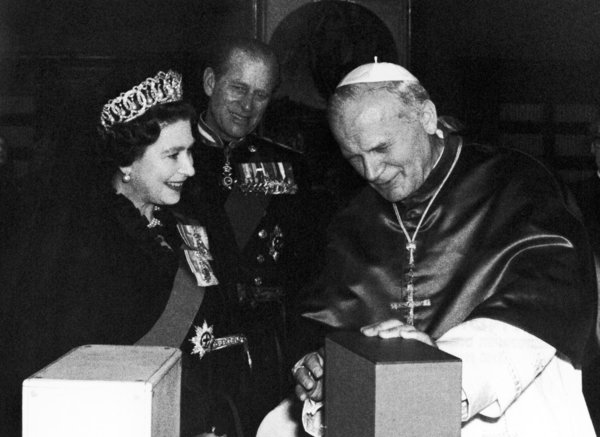

The Queen with the Duke of Edinburgh pictured with Pope John Paul II during a State Visit to the Vatican City. 17 October 1980


The Nun's Olympics. Left to Right Spike Milligan, David Cannon, Barbara Bremel, Susan Crosland and Kevin Moran. They didn't have quite the organisation, perhaps, of the Munich Olympics. But the ecclesiastical games did have a spirit of their own. There were nuns, monks, rabbis and vicars gathered in Chiswick to display their prowess for Spike Milligan, whose new BBC TV comedy series 'A Milligan for All Seasons' starts next week. There were hurdle races for the nuns (at least two of whom were fellas), pole vaults for priests . . . and an amazing confessional relay, with each runner stopping to confess every 100 yards. Producer Roger Race, slightly bemused, said: " Spike told us to order a couple of dozen actors in clerical garb and this is the result." Spike himself turned out for the hurdles, dressed as a Roman Catholic priest, hoping to achieve immortality, presumably, as the Father of the Games. 4 September 1972
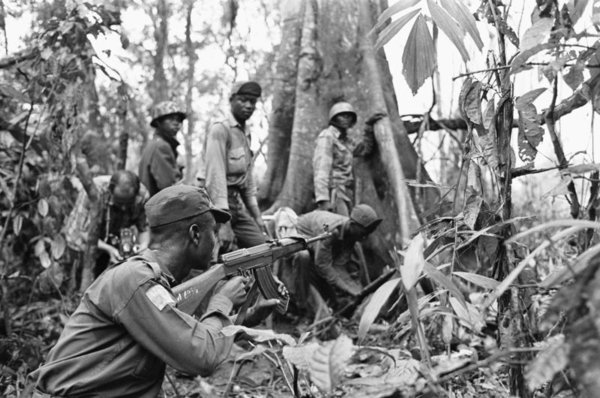

Biafran soldiers seen here advancing through the jungle towards the Nigerian army. The Nigerian Civil War, also known as the Biafran War endured for two and a half years, from 6 July 1967 to 15 January 1970, and was fought to counter the secession of Biafra from Nigeria. The indigenous Igbo people of Biafra felt they could no longer co-exist with the Northern-dominated federal government following independence from Great Britain. Political, economic, ethnic, cultural and religious tensions finally boiled over into civil war following the 1966 military coup, then counter-coup, which led to the persecution of Igbo living in Northern Nigeria. Control over oil production in the Niger Delta played a vital strategic role in the causes of the war. Within a year, the Nigerian Military Government had surrounded Biafra and imposed a blockade. The ensuing stalemate led to a severe famine in the region. Over the two and half years of the conflict varying estimates of one to two million people died from starvation, diseases or fighting. 11 June 1968
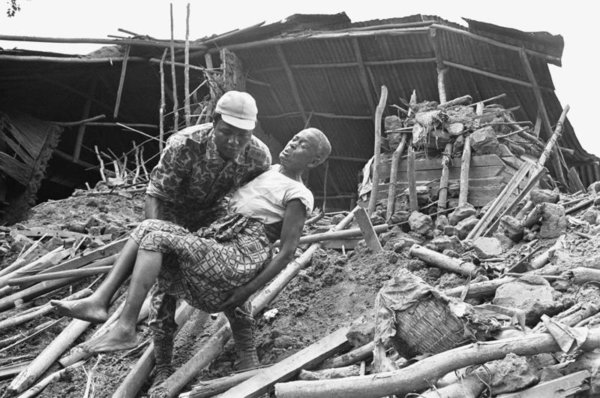

A Biafran soldier seen here helping an old lady from the wreckage of her home following a artillery bombard by the Nigerian army. The Nigerian Civil War, also known as the Biafran War endured for two and a half years, from 6 July 1967 to 15 January 1970, and was fought to counter the secession of Biafra from Nigeria. The indigenous Igbo people of Biafra felt they could no longer co-exist with the Northern-dominated federal government following independence from Great Britain. Political, economic, ethnic, cultural and religious tensions finally boiled over into civil war following the 1966 military coup, then counter-coup, which led to the persecution of Igbo living in Northern Nigeria. Control over oil production in the Niger Delta played a vital strategic role in the causes of the war. Within a year, the Nigerian Military Government had surrounded Biafra and imposed a blockade. The ensuing stalemate led to a severe famine in the region Over the two and half years of the conflict varying estimates of one to two million people died from starvation, diseases or fighting. 11 June 1968
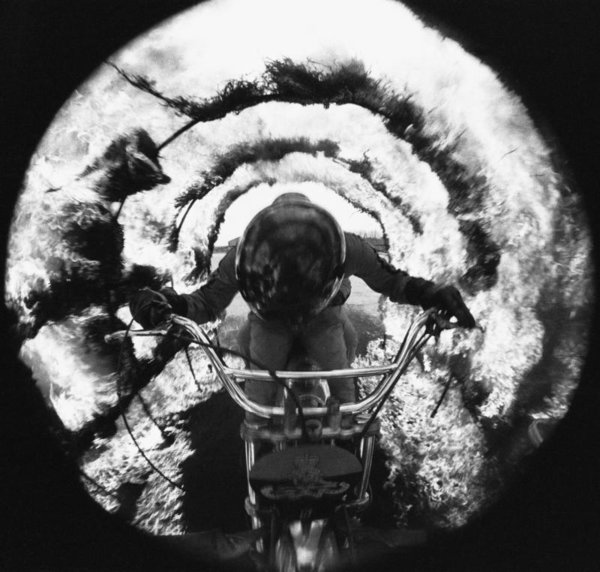

Bombardier Derek Shipley of the Royal Artillery Motorcycle Display Team seen here travelling thorough the tunnel of flames during a practice session before the start of the teams summer season of displays. Mirror cameraman Ron Burton went along for the ride and snapped his remarkable picture from the pillion using a fronted mounted camera. Later, he said: "I ducked my head, closed my eyes and pressed the button ... one trip was enough for me." 8 May 1973
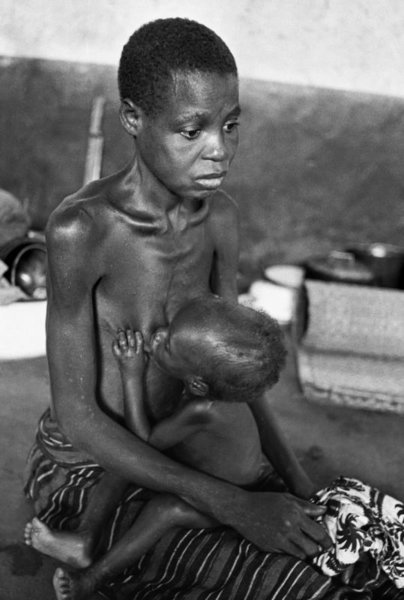

An emaciated mother seen here trying to breast fed her baby, just two of the estimated one to two million victims of the Biafran War. The Nigerian Civil War, also known as the Biafran War, endured for two and a half years, from 6 July 1967 to 15 January 1970, and was fought to counter the secession of Biafra from Nigeria. The indigenous Igbo people of Biafra felt they could no longer co-exist with the Northern-dominated federal government following independence from Great Britain. Political, economic, ethnic, cultural and religious tensions finally boiled over into civil war following the 1966 military coup, then counter-coup, which led to the persecution of Igbo living in Northern Nigeria. Control over oil production in the Niger Delta played a vital strategic role in the causes of the war.
Within a year, the Nigerian Military Government had surrounded Biafra and imposed a blockade. The ensuing stalemate led to a severe famine in the region. Over the two and half years of the conflict, according to varying estimates, one to two million people died from starvation, diseases or fighting. 23 June 1968
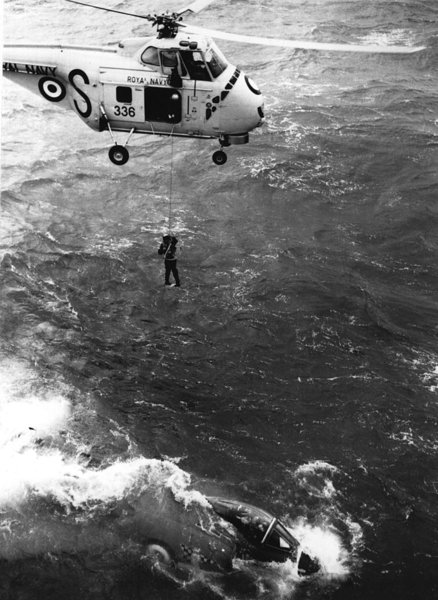

A photograph of a helicopter rescue operation (Sikorsky S-55), taken by Keystone photographer Ronald Burton, which won him the Press Photographer of the Year and News Photograph of the Year Award. 19 December 1958


Chief Minister of Jamaica Norman Manley talking to a member of London's Notting Hill community after rioting in the area, during a visit to England. 6 September 1958
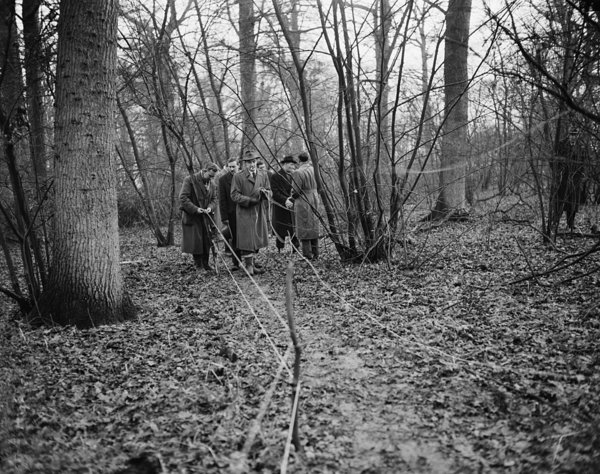

After completing their search, detectives remove the ropes on either side of the path leading to the spot where the body of 17-year-old Anne Noblett was found at Rose Grove Wood, near Whitwell, Hertfordshire. Noblett was last seen on 30 December 1957. Her body was discovered a month later by two brothers walking their dog. The body was found in a frozen condition, despite relatively mild weather. This led to speculation that it had been kept in a deep freeze for some time before being dumped at the wood, and to the case becoming known as the 'Deep Freeze Murder'. Noblett's killer remains unidentified. 2 February 1958
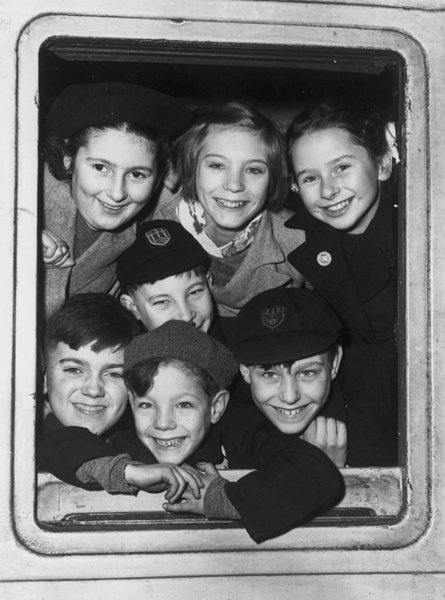

A group of children aged between six and thirteen board a train at London's St Pancras Station, en route to new homes in Australia. Having somehow been deprived of a normal home life, they are being sent abroad by the Church of England Scheme, in the hope of better things. 18 Januray 1958
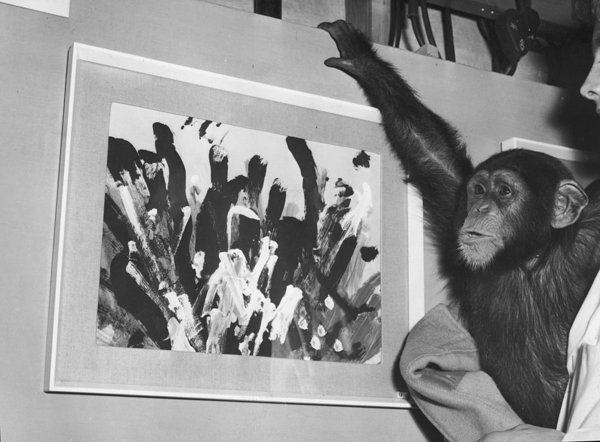

Congo, the famously artistic London Zoo chimpanzee, with one of his paintings at an exhibition at the Institute of Contemporary Arts which is being held in association with the Zoological Society of London. 16 September 1957
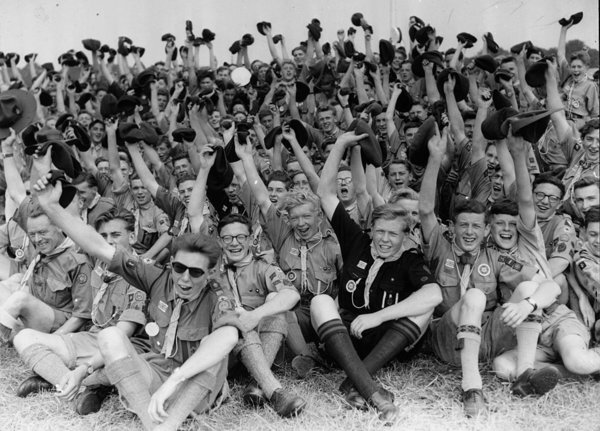

The Durham County scout troop raise their caps at the opening of the World Scout Jubilee Jamboree at Sutton Coldfield in the West Midlands. 2 August 1957
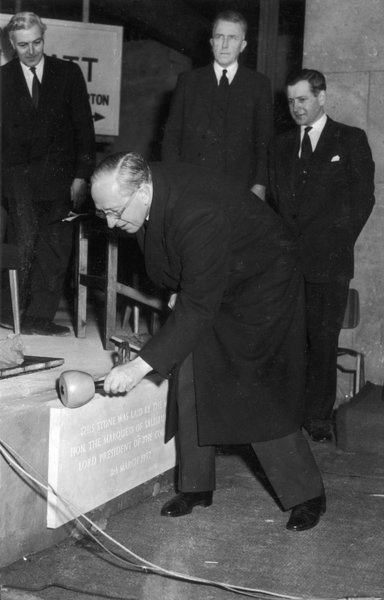

Lord Salisbury, Lord President of the Council, lays the foundation stone of the new National Film Theatre on London's South Bank. 8 March 1957
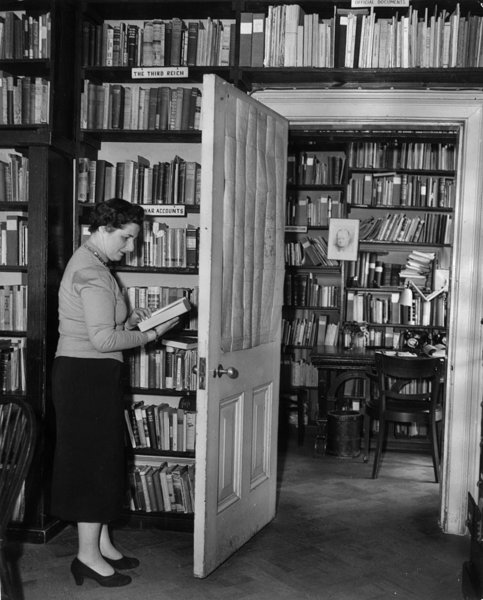

Mrs Ilse Wolff the librarian in the Wiener Library founded by Dr Alfred Wiener as a weapon against Hitler and Nazi propaganda. At present in Manchester Square, London it is having to move due to rebuilding but no new premises have been found. 21 March 1957
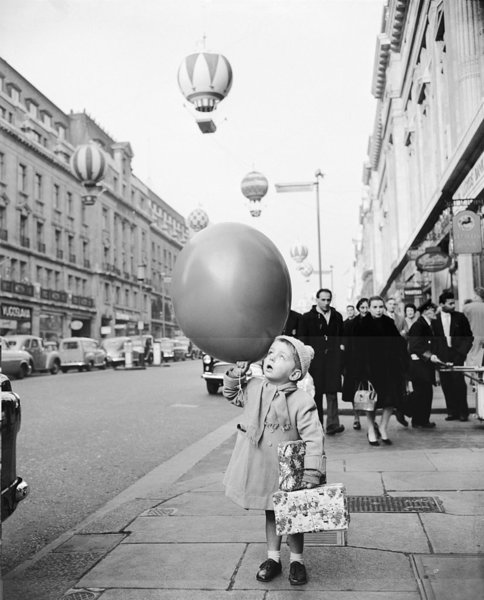

Three-year-old Peter Murphy holding a huge balloon is fascinated by the colourful decorations as he walks down Regent Street during a Christmas shopping expedition in London. 1 January 1957
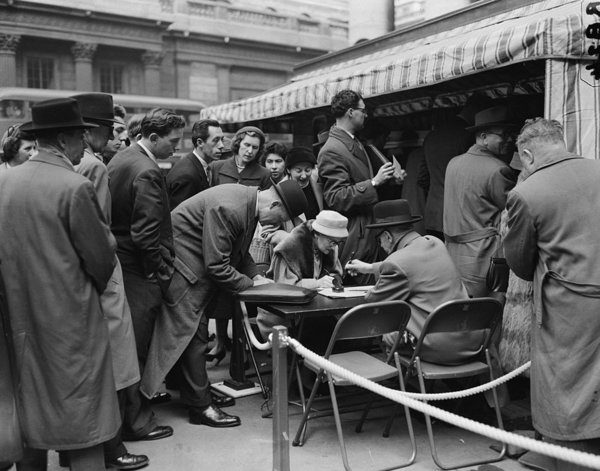

Customers buying Premium Savings Bonds, on sale for the first time, outside the Royal Exchange, London. 1 November 1956
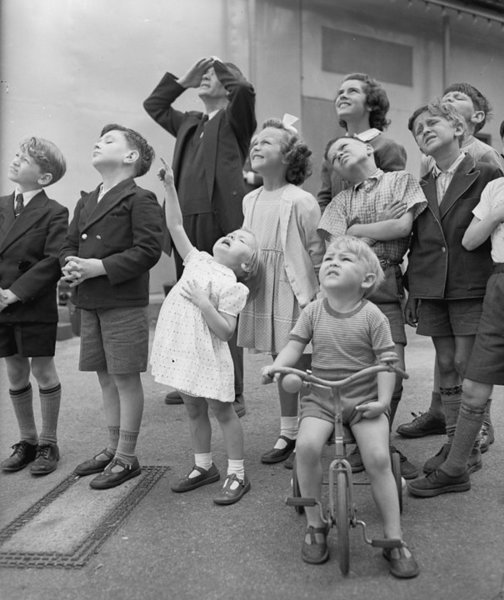

Youngsters gaze up in amazement as aerial balancer Johnny Caross performs acrobatic feats at the Battersea Fun Fair, London. These are no ordinary feats however - Johnny is balancing on top of a thin, swaying pole, 110 feet above the ground. 30 July 1955
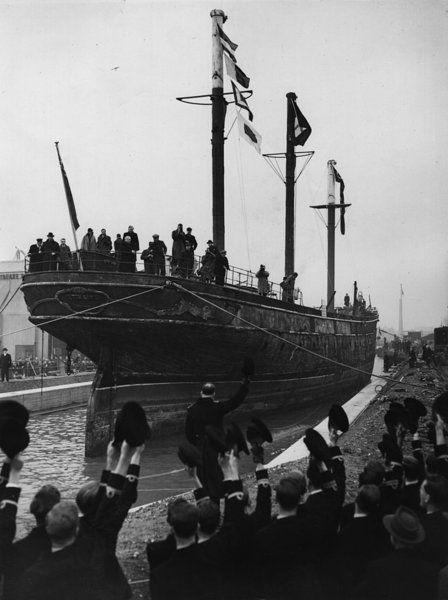

The old sailing ship the Cutty Sark being cheered by Naval officers as she is towed into her new berth at Greenwich. 10 October 1954
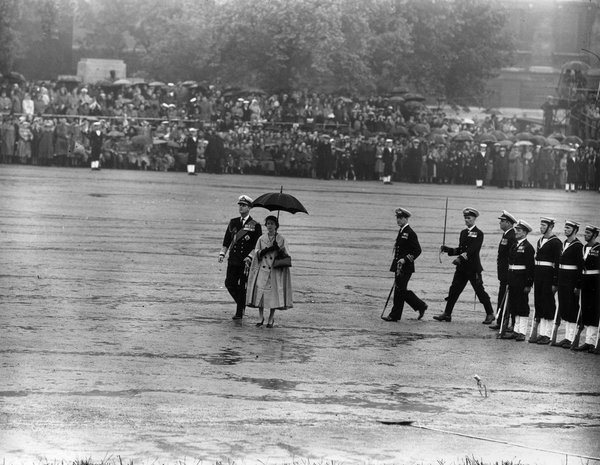

Queen Elizabeth II, accompanied by Prince Philip (Duke of Edinburgh), uses a large umbrella during her inspection of the Royal Naval Volunteer Reserve on Horse Guards Parade, London. 12 June 1954
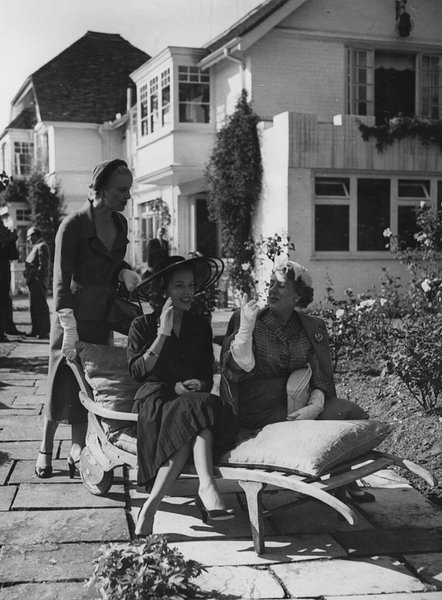

Actresses (L-R) Diana Wynyard, Sally Anne Howes and Cicely Courtneidge, at the opening of a theatrical convalescence home at the home of Ivor Novello, at Redroofs, Maidenhead, England. 8 September 1953
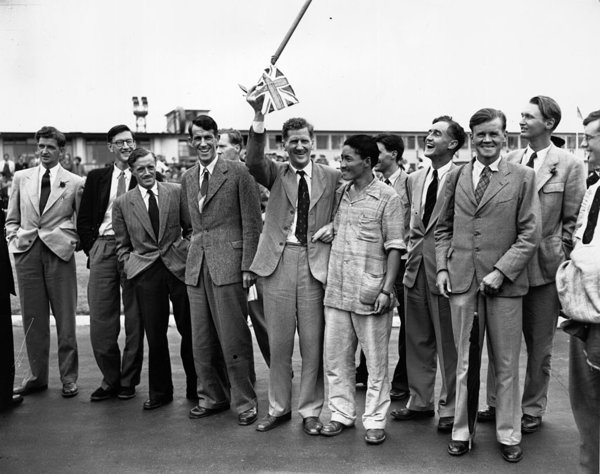

The victorious Mount Everest climbing team arrive at London Airport. Colonel John Hunt waves the flag, on his left is Tenzing Norgay, better known as Sherpa Tensing, and on his right is Edmund Hillary. 3 July 1953
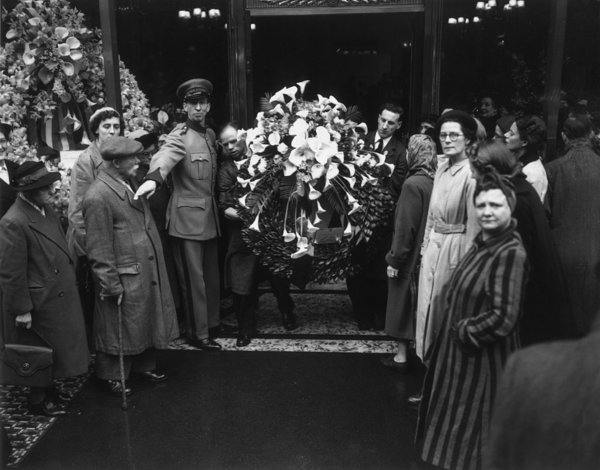

One of many floral tributes to Her Late Majesty Queen Mary being carried from Mssrs Moysey Stevens' premises. 30 March 1953
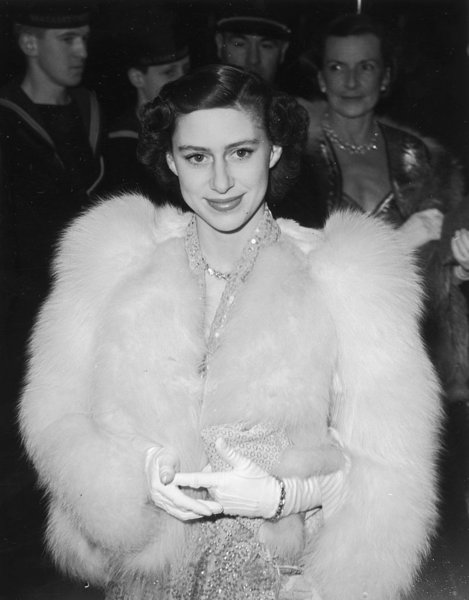

Princess Margaret attending the premiere of the film 'Captain Horatio Hornblower' at the Warner Theatre Leicester Square. 12 April 1951


American actor John Wayne (1907 - 1979) surrounded by fans at the opening of Republic House, the new Headquarters of Republic Pictures, in Soho Square, London. 26 February 1951
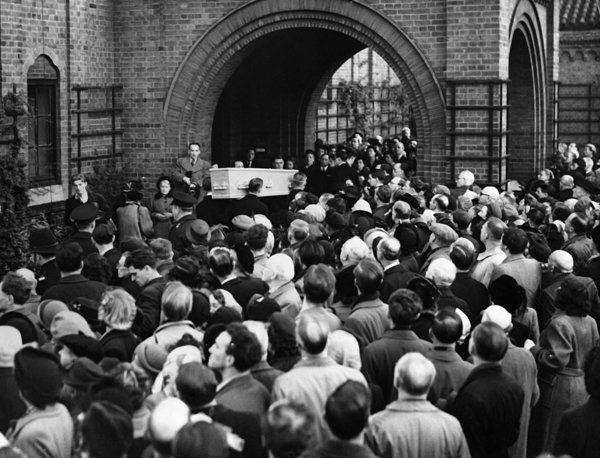

The body of Irish playwright George Bernard Shaw arrives at Golders Green Crematorium in London. 6 November 1950.
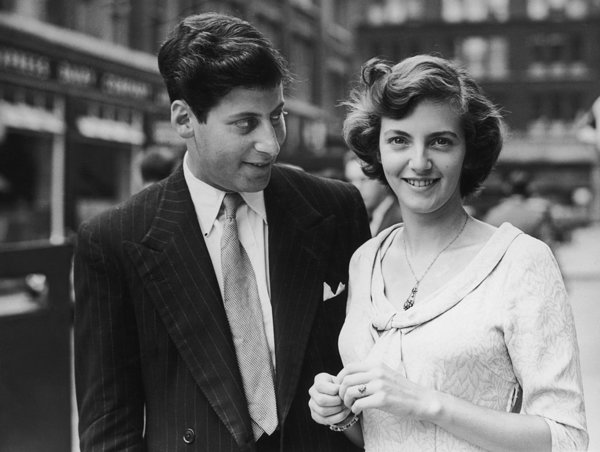

English broadcaster, writer, politician and chef Clement Freud (1924 - 2009) in London with his fiancee, actress June Flewett, shortly after their engagement was announced. At the time, Freud was working as the catering manager at the Arts Theatre Club. 28 June 1950
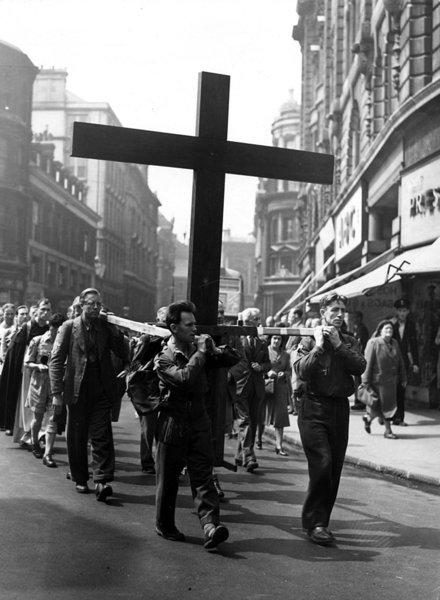

Christian pilgrims arrive in London from Jerusalem carrying a wooden cross from Mount Calvary. They parade through Liverpool Street on their way to the Church of Saint Mary. 11 July 1949
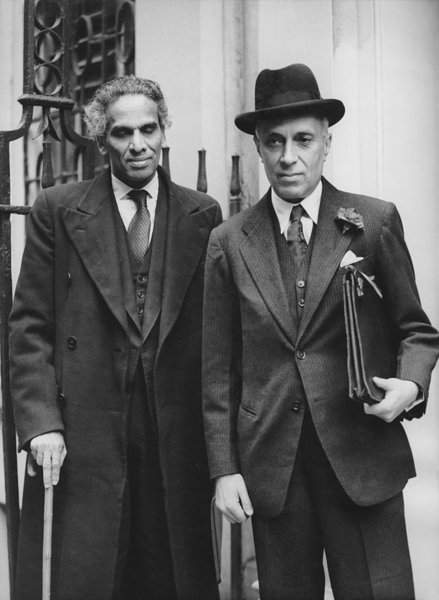

Indian Prime Minister Pandit Nehru (1889 - 1964, right) arrives at Downing Street in London with V. K. Krishna Menon (1896 - 1974), the High Commissioner for India. They are scheduled for talks with British Prime Minister Clement Attlee. 21 April 1949


Orphans from St Anthony's Home for Girls, Feltham, waiting at St Pancas railway station, London, before travelling to Tilbury docks to board a ship bound for Australia under the Catholic Emigration Scheme. The girls are travelling to the Saint Vincent Paul Sisters Of Charity in Adelaide. 17 December 1948
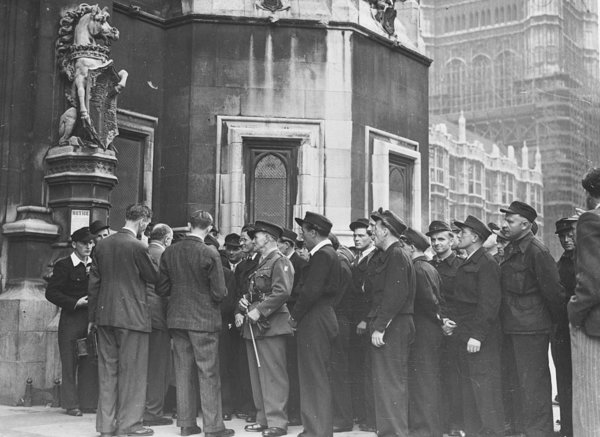

German prisoners of war waiting outside the House of Commons to take lunch with a group of MP's from a selection of political parties. 6 August 1947
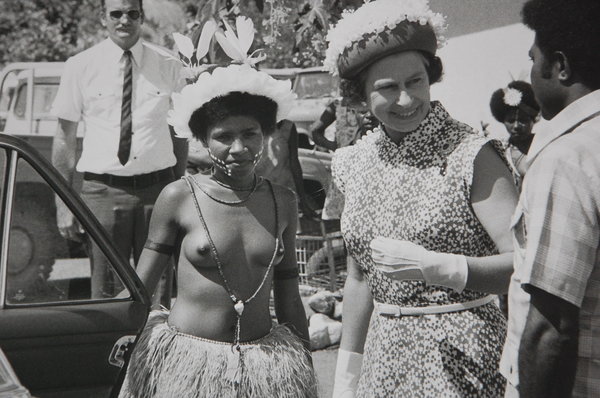

HRH Queen Elizabeth II seen here being greeted by officials in Western Samoa during her Silver Jubilee tour of Australia and the Far East. 11 February 1977
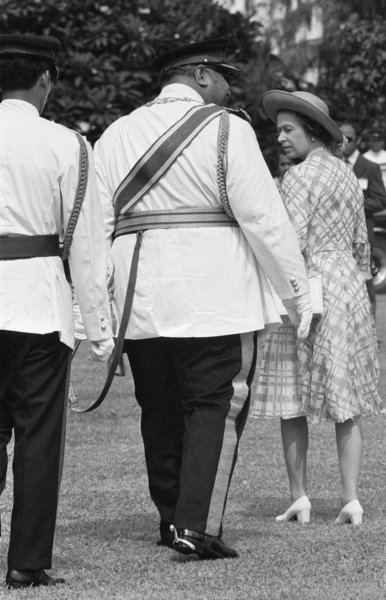

Queen Elizabeth II seen here in Tonga with the King Taufa'ahau Tupou IV of Tonga during her on her Silver Jubilee tour of Australia and the Far East. 14 February 1977
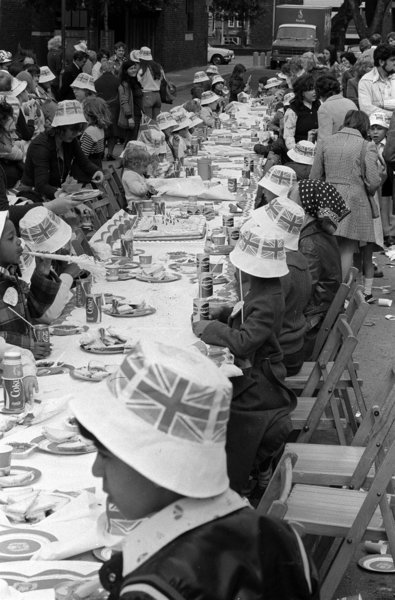

Queen Elizabeth Silver Jubilee street party in Glenfinlas Way, Camberwell. Children sitting at long table in street being served food and drink by parents. June 1977
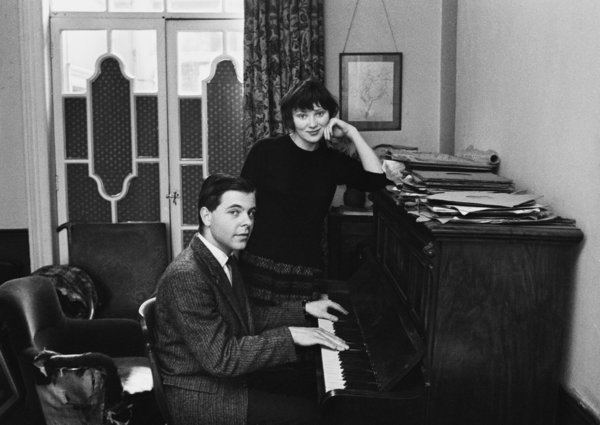

Bernadine Wall, who was a witness in the obscenity trial for D.H. Lawrence's book "Lady Chatterley's Lover", pictured with her fiance Stephen Bishop. 16 April 1961
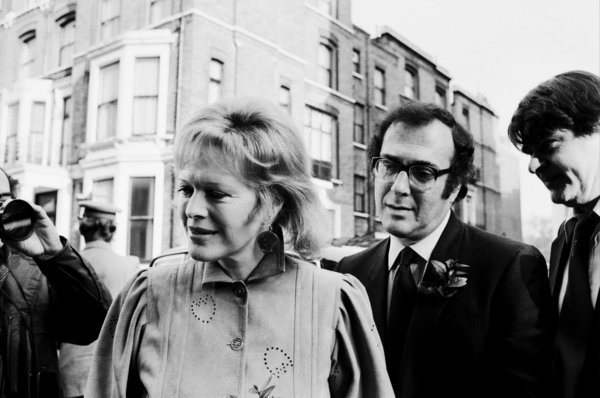

The Caretaker. Wedding of playwright Harold Pinter and author Lady Antonia Fraser at Kensington Registry Office. 27 November 1980
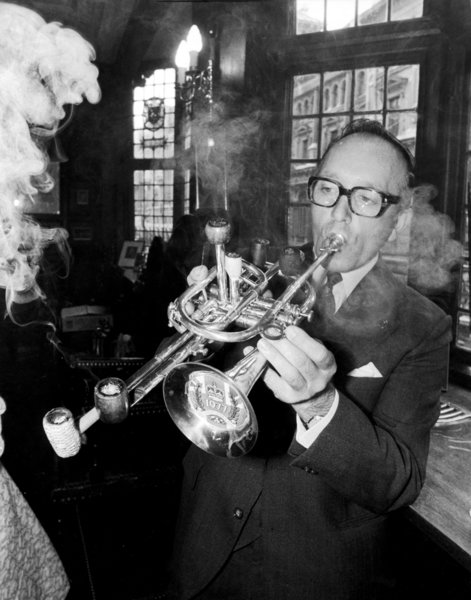

Mr Brian Cole, winner of the Remarkable Pipe Contest seen here smoking / playing his Silver Jubilee Fanfare Pipe, a trumpet with six pipes attached at the Prince Henry's in Fleet Street. 26 July 1977
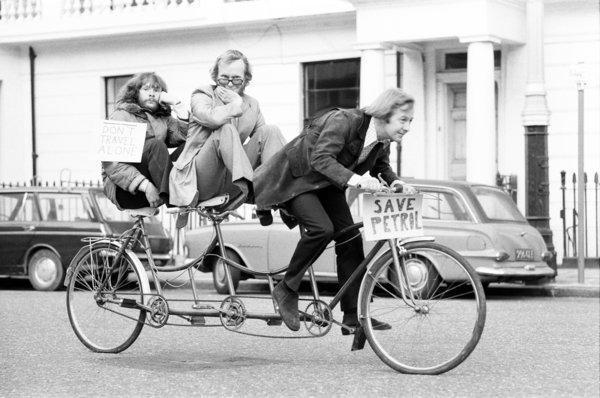

In tandem: The Goodies, on the perfect answer to petrol rationing, ride their three seater tandem bicycle in London. 21 November 1973
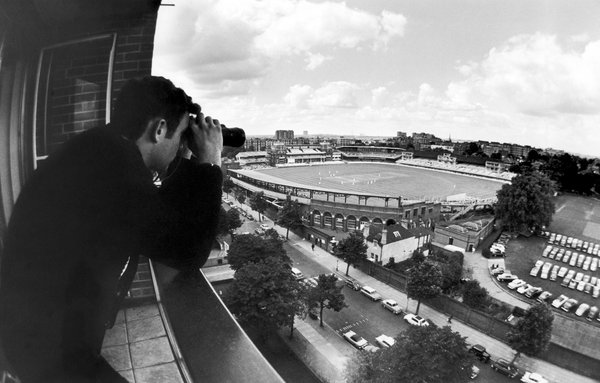

Birds eye view of Lords cricket ground on the first day of cricket on Sunday. Jonathan Cree views the cricket through binoculars from the balcony of his father's ninth floor flat in a block called Lords View. 1 August 1965
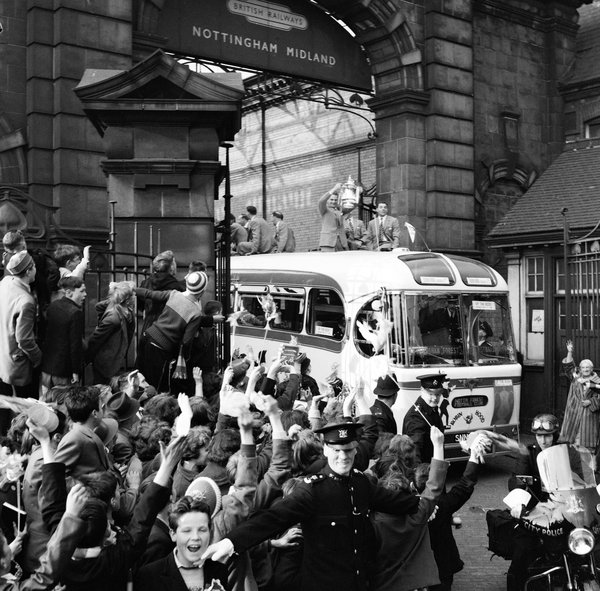

Nottingham Forest team on a tour of the city of Nottingham following their FA Cup final victory. Nottingham Forest's coach emerges from the city's railway station with skipper Jack Burkitt proudly holding aloft the trophy from the roof of the team bus to the huge crowd gathered on the streets. 4 May 1959
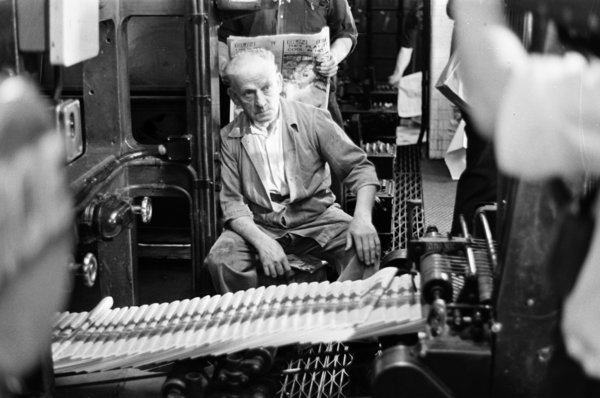

A printer overseeing the production of the first editions of the new Sun newspaper as they roll off the production line in 1964.The Sun Newspaper, was launched by its then owners, International Publishing Corporation (IPC), to replace the Daily Herald, and was initially published in Manchester. 15 September 1964


The dog that has to yawn to order. An audition took place in Broad Court, off Drury Lane, London to find a placid, bored mongrel dog, able to yawn on cue. The dog was required for the part of Crab in the rock musical "Two Gentlemen of Verona", which opened at the Phoenix Theatre, London on 26th April 1973. The dog would be playing opposite entertainer Benny Lee. The dog finally chosen was a six year old mongrel called "Ponting", owned by Mrs Daphne MacDonald of Chelsea. She had picked him up as a stray. 27 March 1973
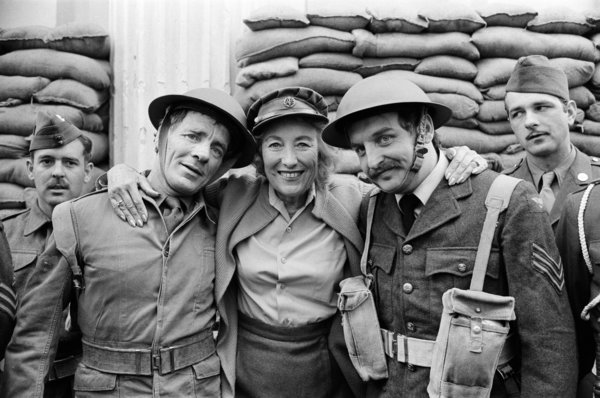

Forces darling Dame Vera Lynn celebrates the 40th Anniversary of D Day with an appearance in 'Stage Door Canteen' at the Lyceum Theatre in London. The front is sandbagged and Vera is wearing World War Two uniform for the photocall, pictured with some of the troops outside the theatre.
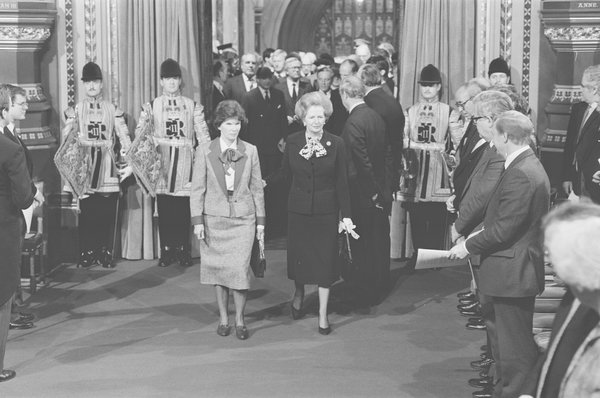

Lording It. Prime Minister Margaret Thatcher escorts the wife of French President Francois Mitterrand into the Royal Gallery as her husband prepares to makes a speech to the House of Lords and House of Commons in the Palace of Westminster. 24 October 1984
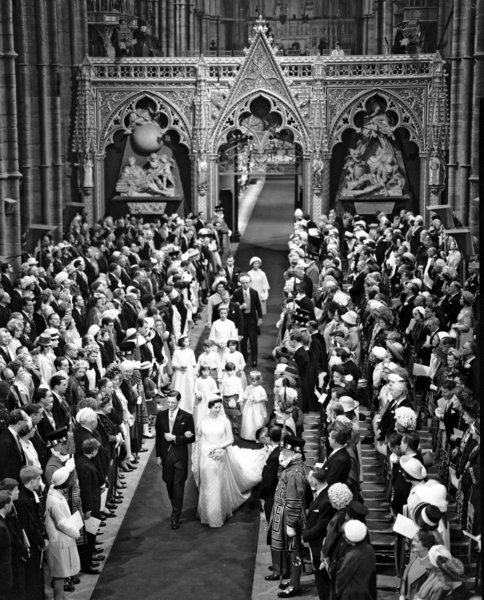

Sir Angus James Bruce Ogilvy and his bride Princess Alexandra of Kent, cousin to the queen seen here on their wedding day leaving Westminster Abbey, followed by their bridesmaids Princess Anne, Georgina Butters, Archduchess Elizabeth of Austria and page boy David Ogilvy. 23 April 1963
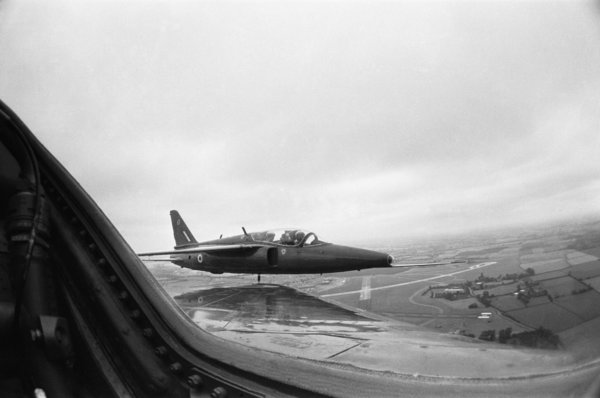

The view from the cockpit of a Red Arrow as they over fly RAF Little Rissington home of the Central Flying School in formation. 4 August 1965
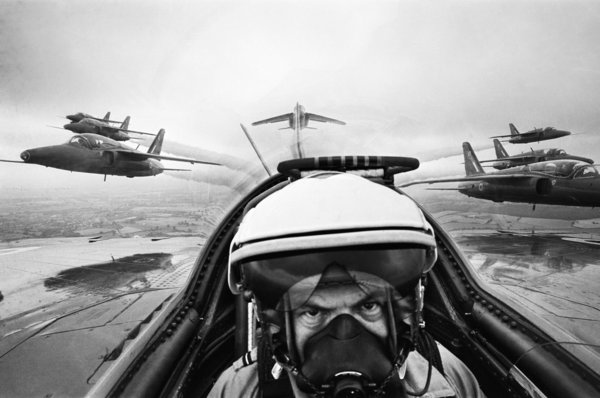

The eyes have it. Daily Herald photographer Ron Burton in the cockpit of a Folland Gnat aircraft of the RAF Aerobatics team the Red Arrows as he joins the team on a training flight over RAF Little Rissington, home of the Central Flying School. Ron worked for months on this iconic photo of the Red Arrows in formation and had to undergo special training in a flight simulator so that he could cope with the G-forces while in flight. 4 August 1965
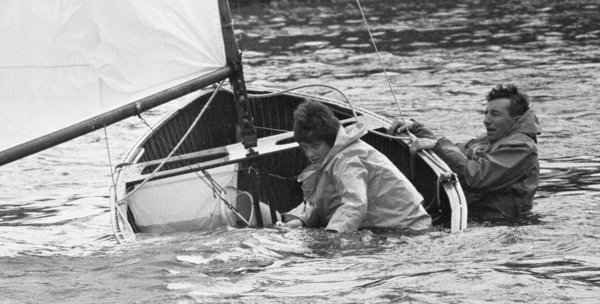

They also sailed. Unhappy ending for two competitors in the Easter Sailing Regatta at Teddington. 28 April 1962.
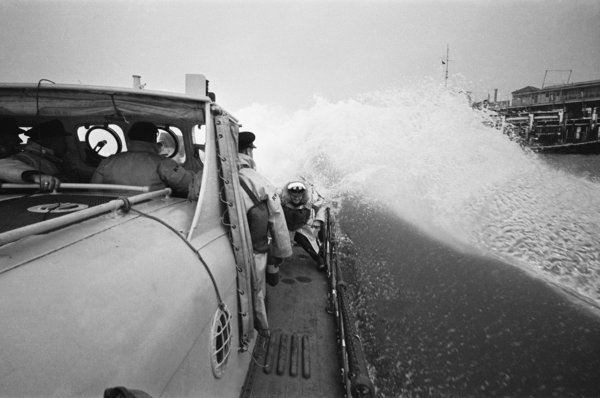

A curtain of spray roaring in protest as the 26 ton RNLI lifeboat Greater London crashes through as it is launched from the end of Southend Pier, at the head of the Thames Estuary. The 46ft 9in Watson Class lifeboat has an eight man crew from Southend. All the crew have other jobs. Most are piermen and fishermen, one is a car salesman but all of them must be ready to answer a distress call whenever it comes. 16 January 1966
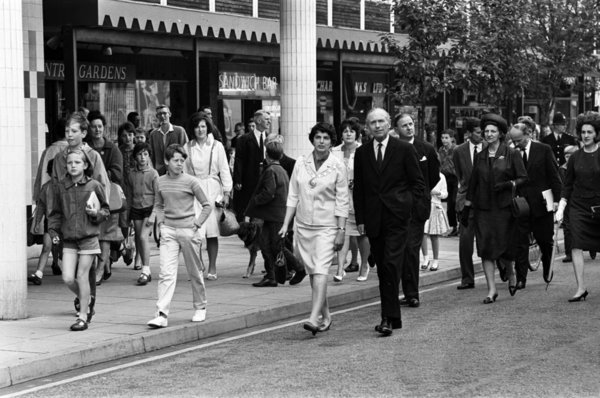

Man of the people... Conservative Prime Minister Alec Douglas-Home at Ongar. During a speech he gave at this event Mr Austen Brooks, a member of the League of Empire Loyalists, heckled Mr Douglas-Home. 27 July 1964
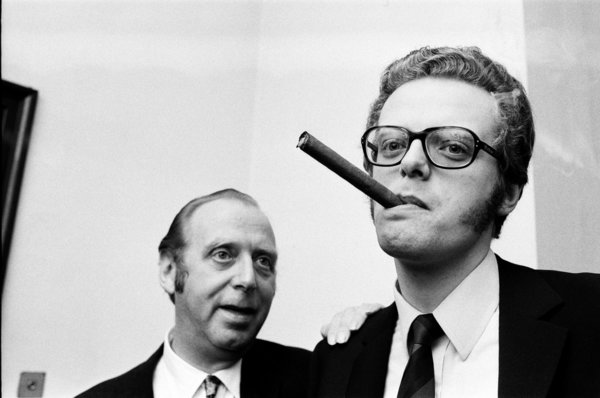

That's my boy! Michael Grade and his father Leslie Grade attend a reception at Cafe Royal to celebrate E.M.I selling its London management to Dennis van Thal, Billy Marsh and Michael Grade. 27 October 1969
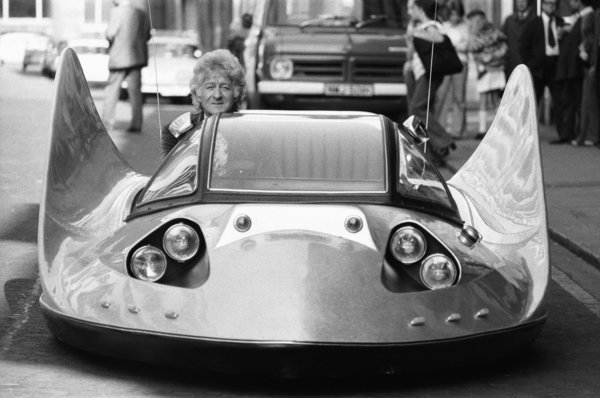

Ready for take off. Actor Jon Pertwee, the new Dr Who in the TV series, has had a flying saucer style car made for his personal use, which is also being used in the new TV series. The car and its owner are seen here shooting a scene at Moorgate for the story entitled " The Invasion of the Dinosaurs". The car has a basic Imp engine and is capable of speeds in excess of 100 mph. The car is also equipped with a computer, TV, telephone and stero. 23 September 1973.
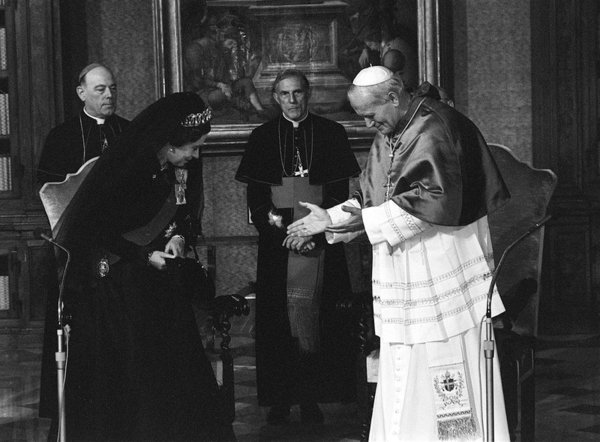

Queen Elizabeth II and the Duke of Edinburgh visit the Vatican to meet Pope John Paul II. Simply the best. One of the finest images ever taken of The Queen as she meets the Pontiff. 17 October 1980.
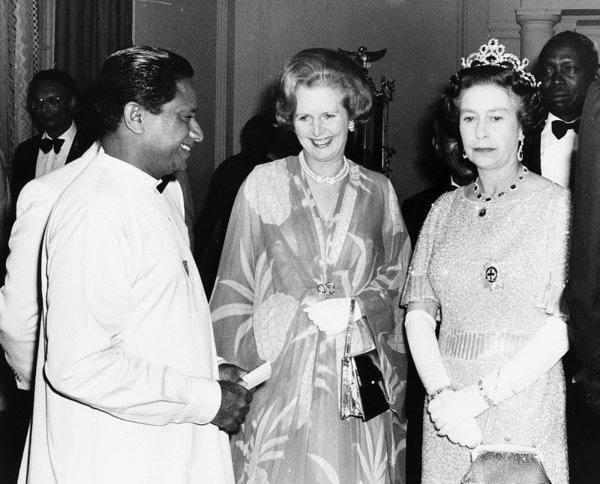

Prime Minister Margaret Thatcher meets the Queen at party given by Her Majesty for the Heads of State at the Commonwealth Conference in Lusaka, capital of Zambia. The occasion provided the opportunity for Mrs Thatcher to be photographed with the Queen for the first time since she became Premier. 1st August 1979


The Iranian Embassy Siege in London where six gunmen of the Iranian extremist group "Democratic Revolutionary Movement for the Liberation of Arabistan" stormed the building, taking 26 hostages before the SAS retook the embassy and freed the hostages. Hero police constable Trevor Lock who was held hostage in the Embassy during the siege, photographed with his wife Doreen as he returns to his home in Dagenham. 6 May 1980.
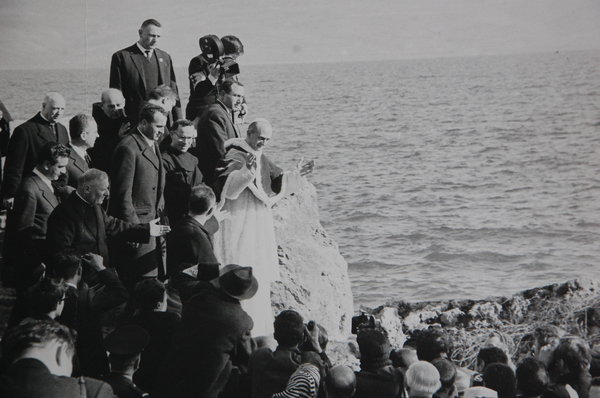

Pope Paul VI seen here on the shore of the Sea of Galilee in Israel during the Papal visit to the Holy Lands. 5 January 1964
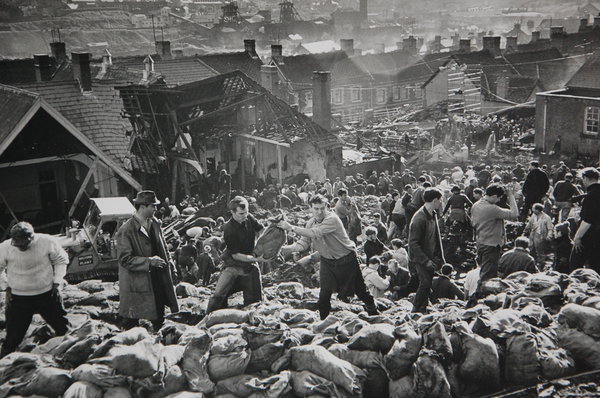

Rescue workers bagging and moving some of the coal spoil following the catastrophic collapse of a colliery spoil tip in the Welsh village of Aberfan, near Merthyr Tydfil, on 21 October 1966. The resulting landslide of 40,000 cubic metres of coal slurry engulfed the village and Pantglas Junior School killing 116 children and 28 adults. It was caused by a build-up of water in the rock and shale on the local colliery spoil tip, which suddenly started to slide downhill in the form of slurry.
